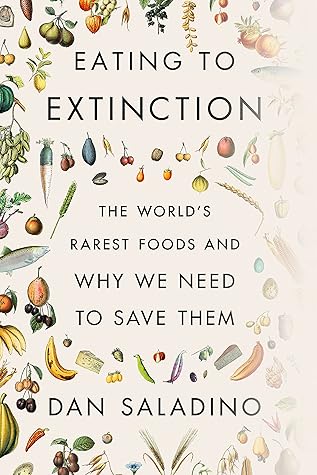More on this book
Community
Kindle Notes & Highlights
by
Dan Saladino
Read between
October 28 - December 2, 2022
We look to paintings, sculptures, cathedrals and temples for the greatest examples of human creativity and vision, but we should also look to the endangered foods in this book, whether a cultivated red grain of rice from south-western China, a rare cheese from the Accursed Mountains of Albania, or a piece of cake baked in western Syria; each of these foods is the product of invention and imagination and the wisdom of generations of unknown cooks and farmers. This
There are a few foods Americans think of as traditional native staples, the most famous being frybread, dough pancakes that puff up as they’re cooked in corn oil on hot skillets. It’s still cooked in homes on reservations in Arizona and New Mexico where it has a strong association with Navajo culture and is sold as an indigenous street food, often described as an ‘American Indian food’. But ‘Navajo frybread’ was never a traditional food – it was created 150 years ago out of desperation. Deep in the winter of 1864, the US Army forced 8,500 Navajo men, women and children off their land in
...more
NAFTA opened up Mexico to exports of dent corn from the Midwest, a quarter of America’s total crop, all propped up by billions of dollars of US government subsidies. The Mexican diet changed as meals based around milpa-grown, highly nutritious maize varieties were replaced by processed foods made with Midwest dents, ‘a high-starch commodity, grown mostly for animal feed and for sweetening sodas’, says Gálvez. Following the introduction of NAFTA, every indicator of public health in Mexico worsened. By the early 2000s, the country had one of the highest obesity rates in the world and had become
...more
The mass of the 23 billion chickens alive at any given moment is greater than that of all the other birds on Earth combined. We are living in the age of the chicken. One of the geological markers of the Anthropocene is expected to be the copious amounts of chicken bones left behind in the fossil record. ‘The signal of our civilisation is already being recorded,’ says Carys Bennett, a geographer at Leicester University, ‘and that signal is the modern chicken.’
Although there are thought to be half a million bison in the USA today, only a small proportion of these are pure bison. This is partly a consequence of the early conservationists crossing the wild animal with cattle, a practice that continued into the early twentieth century in an effort to rebuild bison herds more quickly. Now, with gene sequencing and selective culling, cattle genes are slowly being removed.


